PESTS AND DISEASES OF FORESTRY IN NEW ZEALAND
Dothistroma needle blight
From Field Assessment, Control and Identification of Common Foliage Diseases of Pine in New Zealand.
Primary diagnostic features of Dothistroma needle blight
- Needles turn red-brown
- There is a clear distinction between the red zone and the remainder of the needle
- The lower half of the crown is usually affected, in severe cases the entire crown can turn red-brown
- Needles remain rigid, and are not easily removed from branch
- Symptoms start on the new flush of needles about December or January and disease development continues through to winter when it slows but doesn’t stop
- The needles remain on the tree after they die
- Peak disease occurs about September
- Affects pines from planting age up to about 15 years old
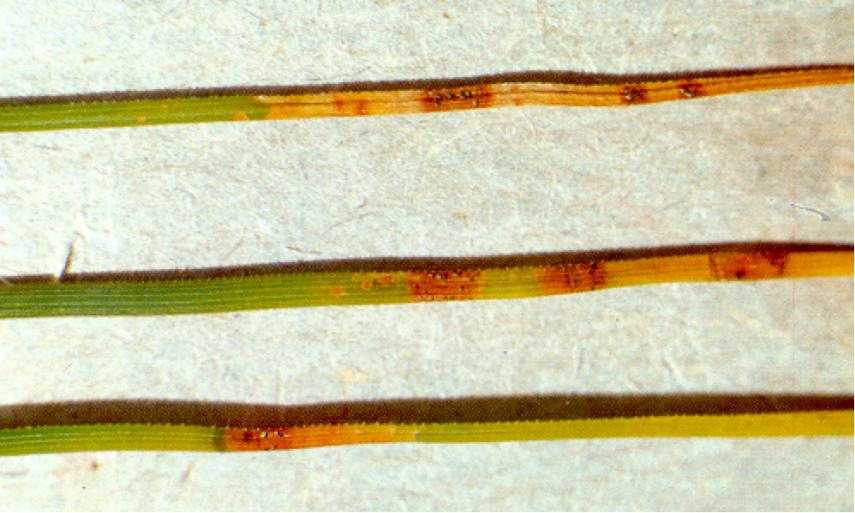
Close up of needles showing brick red bands and black fruiting bodies within the bands where spores are released
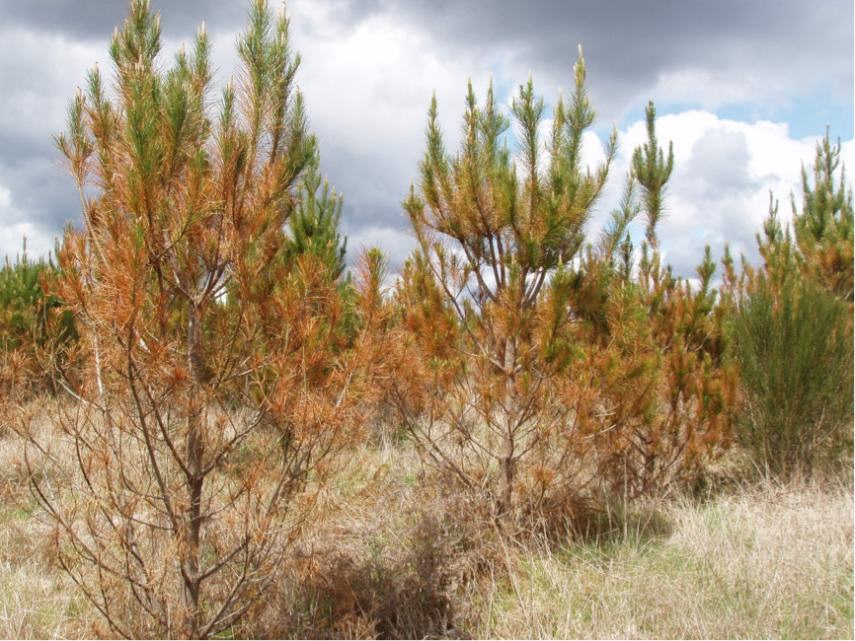
Disease is most severe on the parts of the tree nearest the ground and infection moves up the tree from there. Repeated defoliation will result in lower branches dying. Infection within a stand is uniform, with some tree to tree variation.
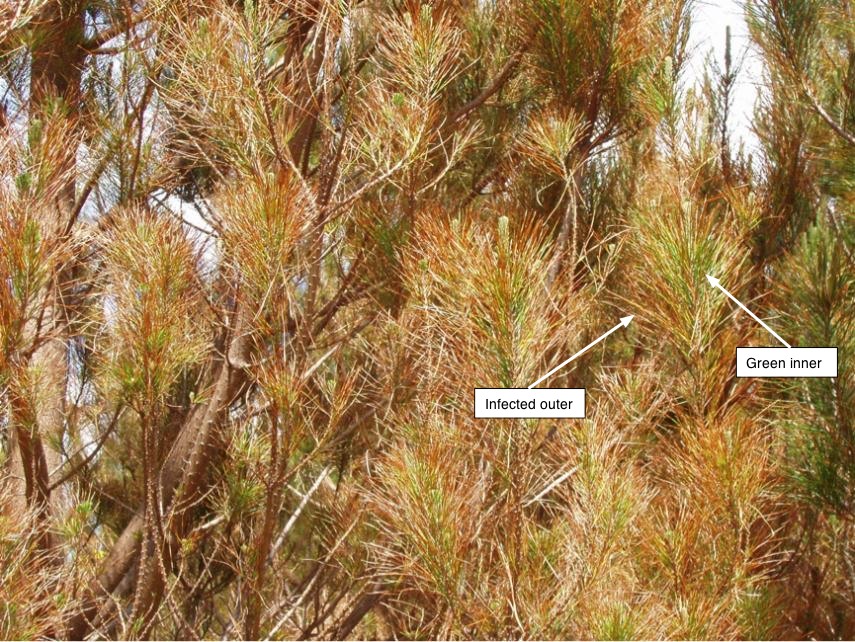
Heavily infected braches. Often Dothistroma displays a “halo” effect because the ends of needles are affected more than the inner parts which stay mainly green.
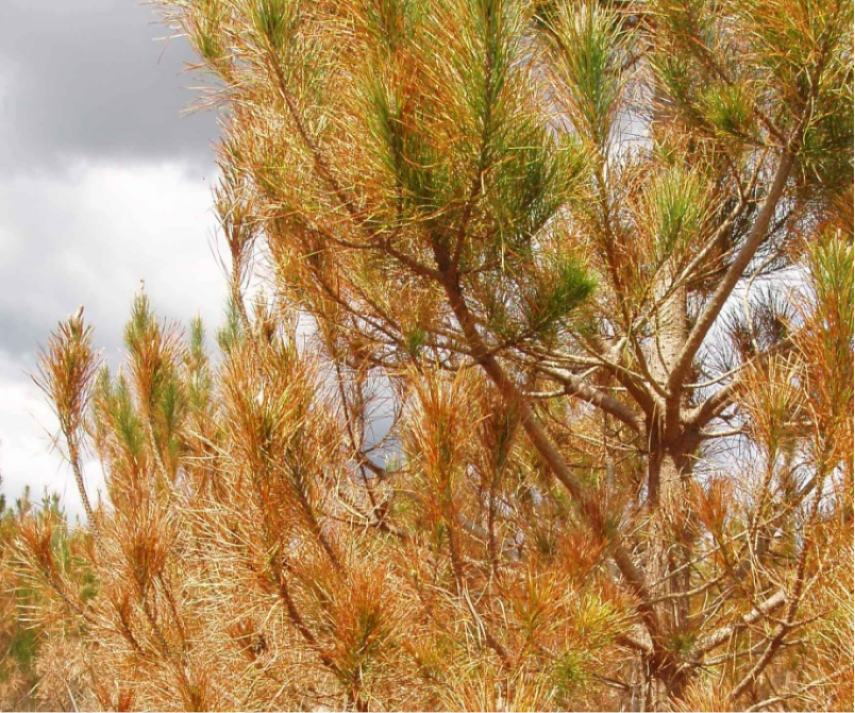
Note rust red foliage
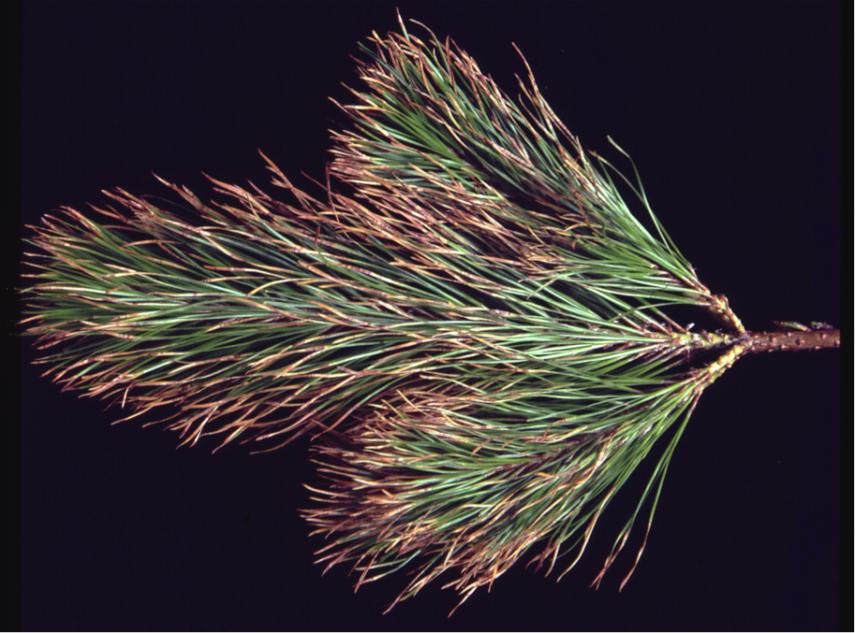
Typical infection on the distal part of the needles
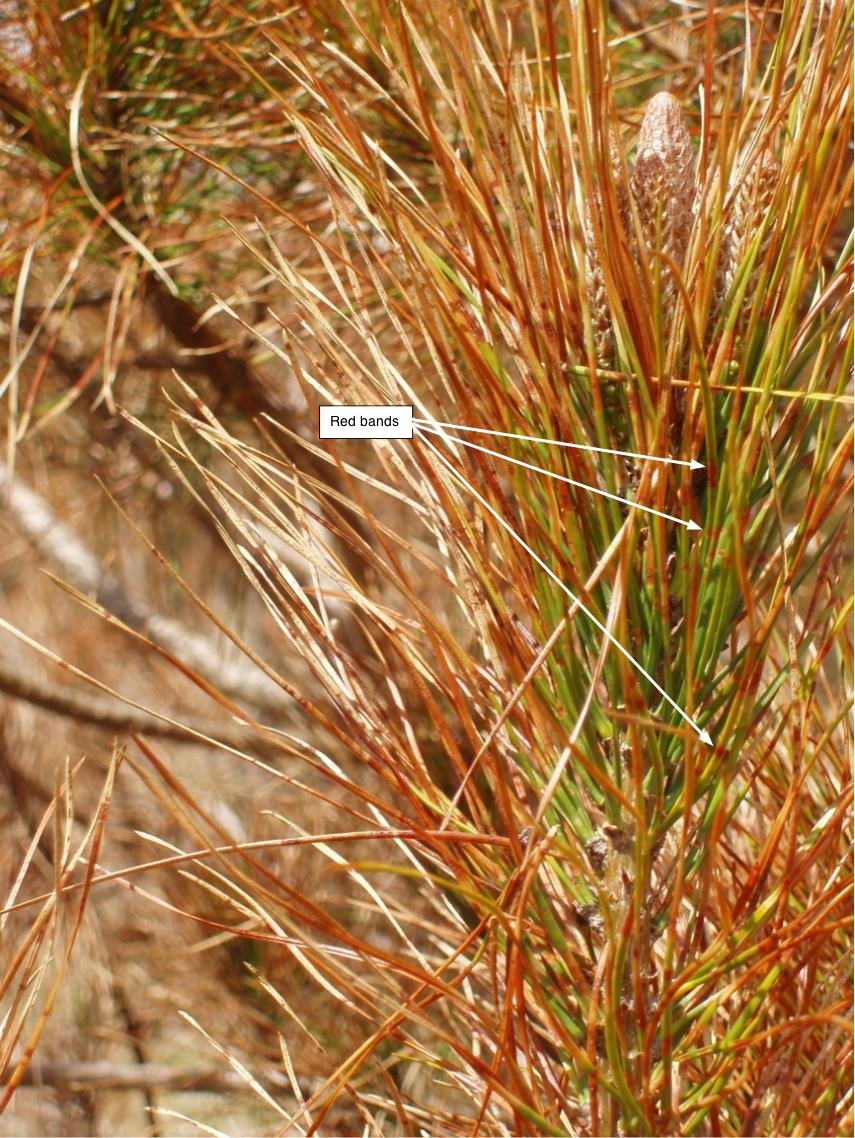
Red bands clearly visible (some are marked by black arrow). Needles on the left of the photo are showing advanced symptoms and have turned pale brown, but the red bands are still obvious.
Disease location
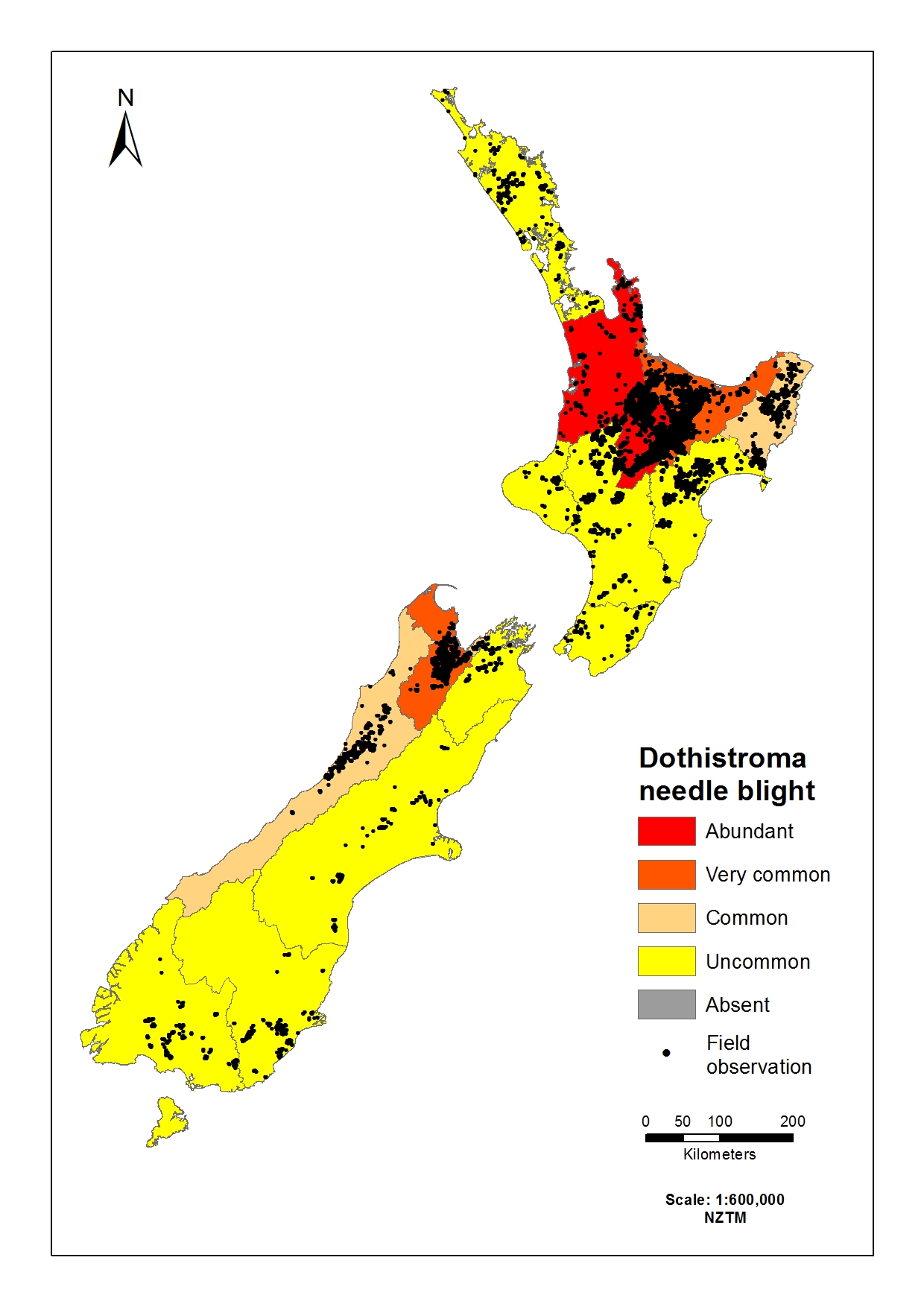

 Farm Forestry New Zealand
Farm Forestry New Zealand

